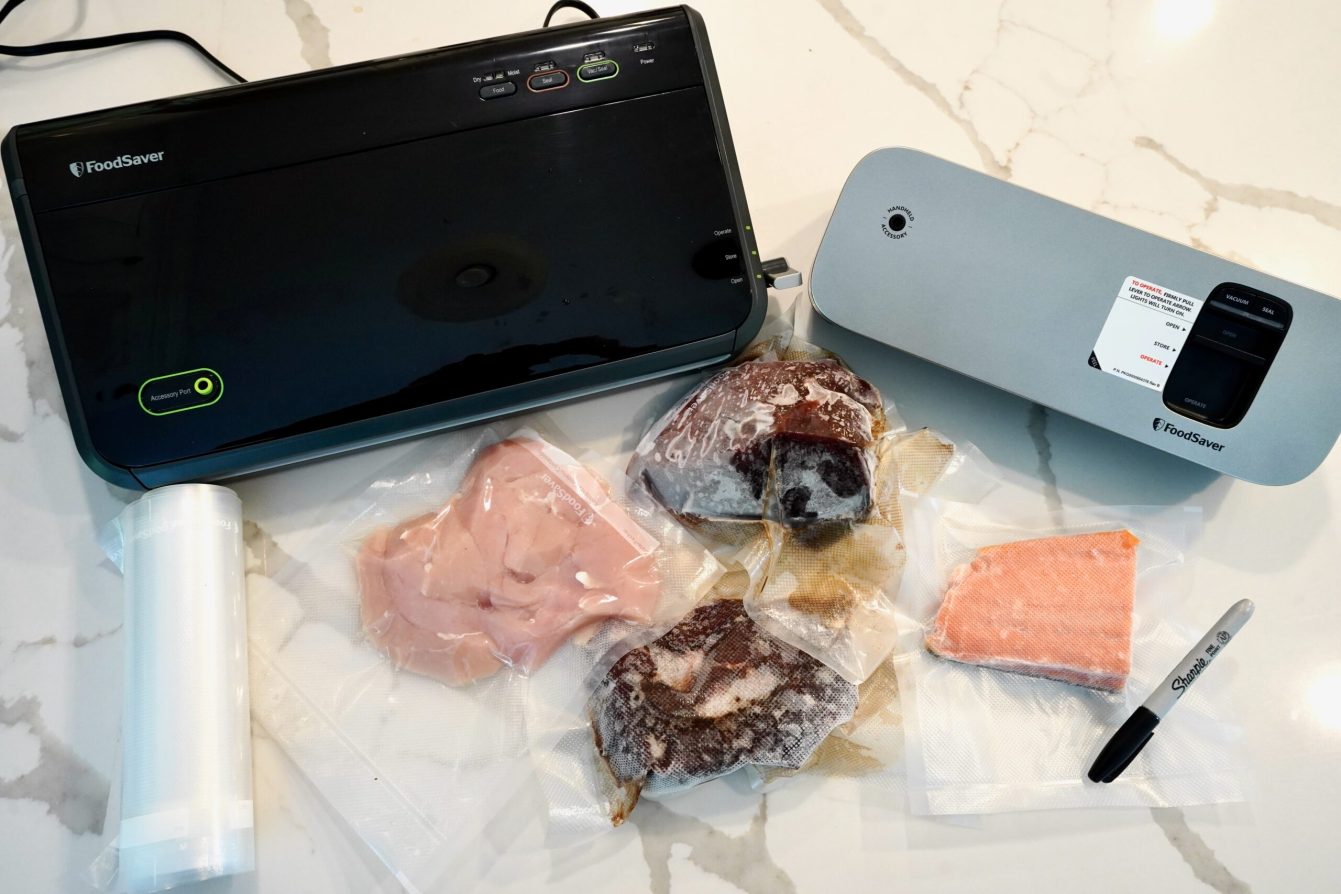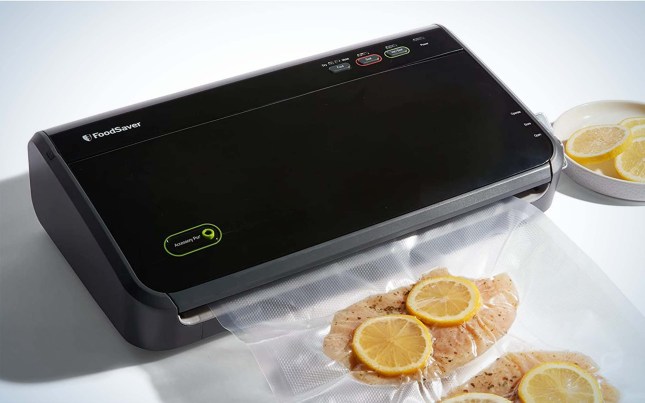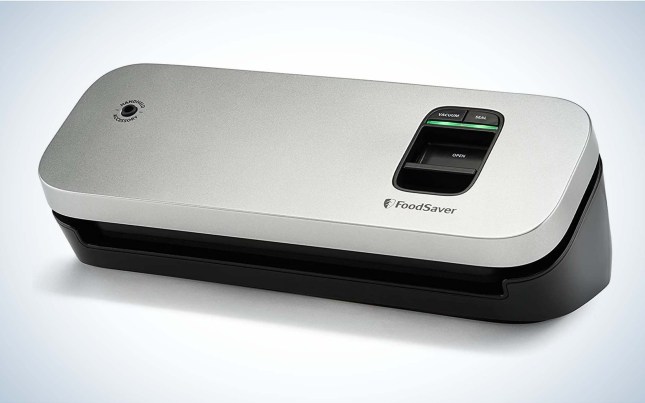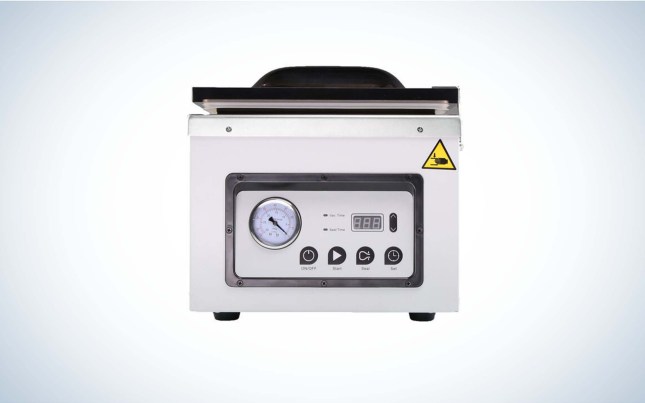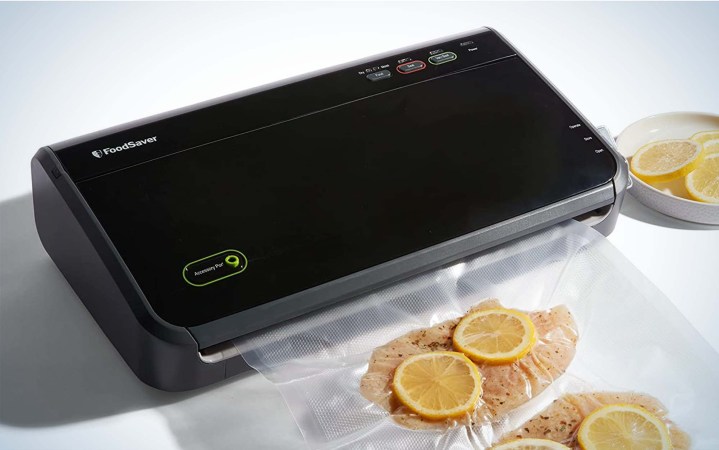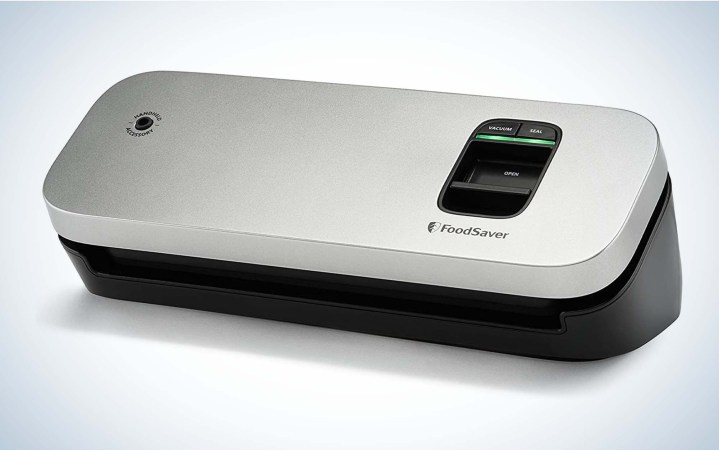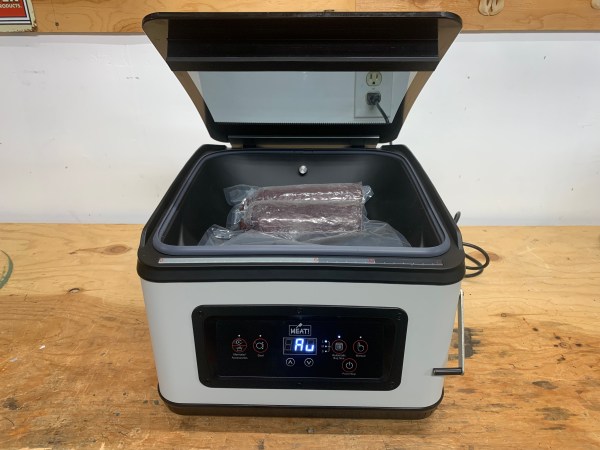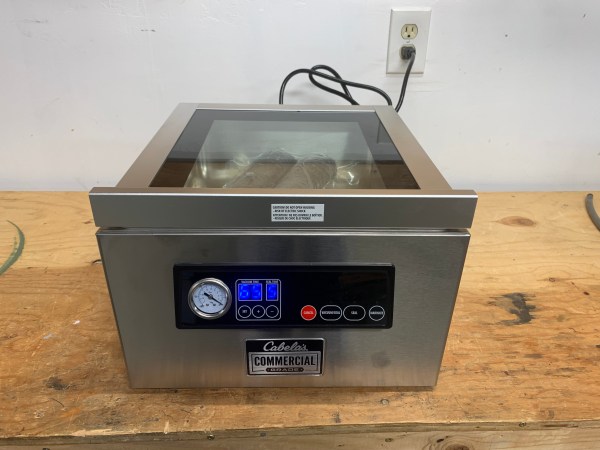We may earn revenue from the products available on this page and participate in affiliate programs. Learn More ›
I have a few hundred pounds of meat and fish in my deep freezer and I know it will keep for well over a year because it’s all vacuum sealed. Whether I’m buying half a cow or coming home with a cooler full of fish, everything gets portioned, sealed, and labeled. I’ve been using the same trusty FoodSaver for nearly eight years. While it served me well, it was time to test some of the newer options on the market that take up less space and are considerably quieter.
Here are three of the best vacuum sealers and a DIY option for when you find yourself without one.
- Best Overall: FoodSaver FM2100
- Best Compact: FoodSaver VS1150
- Best Chamber Vacuum Sealer: Meat! Chamber Vacuum Sealer with Oil-Less Pump
- Cabelas Commercial-Grade Chamber Vacuum Sealer
- DIY vacuum sealer
How I Evaluated the Best Vacuum Sealers
I abandoned freezer paper years ago and exclusively use a vacuum sealer while processing fish, wild game, and farmed meat. I used that experience to evaluate vacuum sealers on the following criteria:
- Noise (Does the sealer make excessive noise?)
- Efficiency (Does the sealer operate quickly and easily?)
- Features (Things like the footprint, bag storage, bag cutter, and custom vacuum settings)
Best Overall (Best for Home): FoodSaver FM2100
Key Features
- Dimensions: 4 x 16.3 x 9.2 inches
- Built-in roll storage and cutter bar
- Dry and moist modes
- Removable drip tray
- Accessory port
- Includes: Three-quart bags, two-gallon bags, one 11-inch x 10-foot roll, and an accessory hose
- Price: $147
Pros
- Quiet
- Powerful
- Low height makes it easy to fit into drawers
Cons
- Bag sealing could be faster
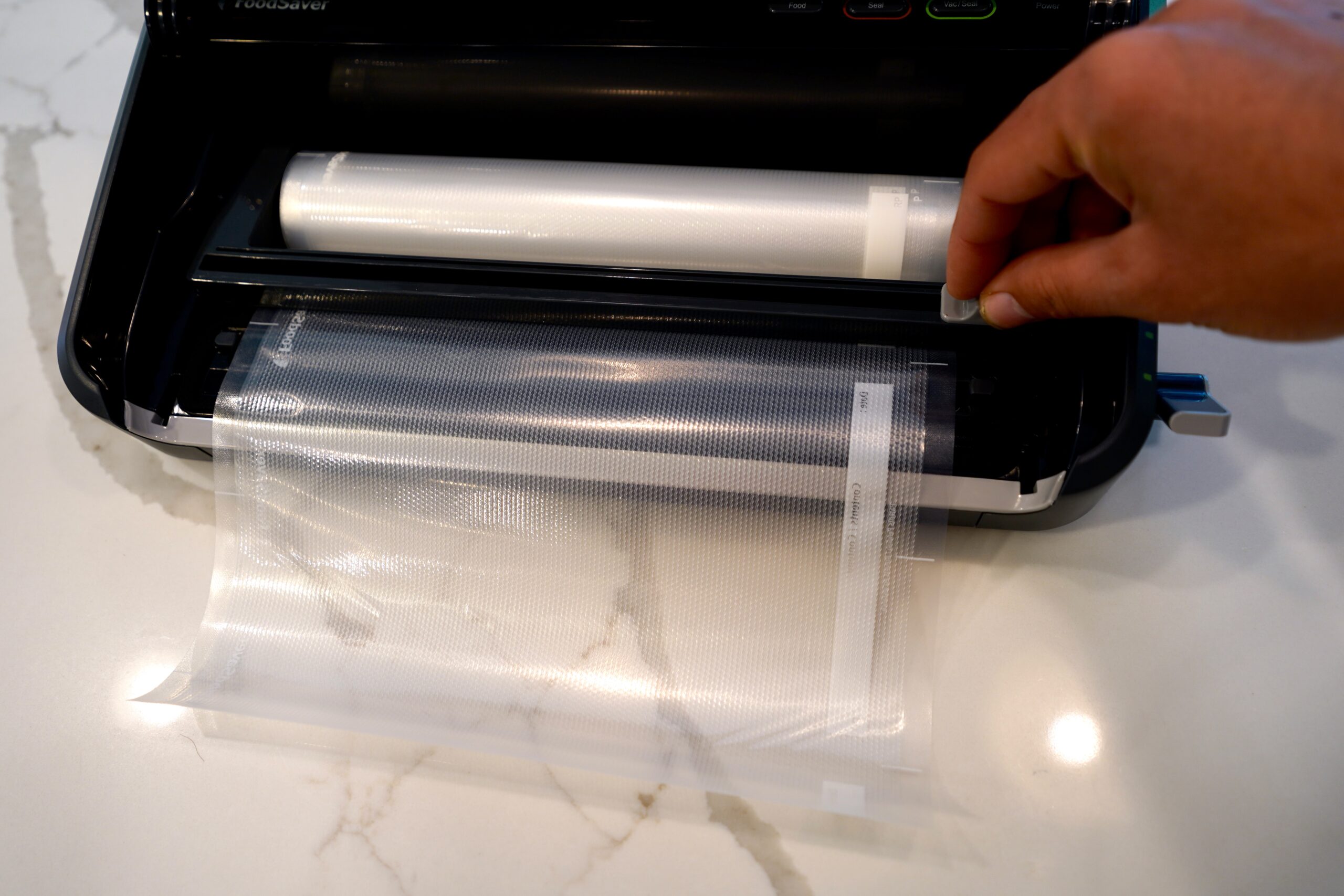
The FM2100 is only 4 inches tall and 9 inches wide, so it can slide into most deep kitchen drawers. The internal bag storage and cutter are intuitive and convenient, which is really nice when you’re cranking out a lot of bags. To use the sealer, you’ll insert the bag to be sealed or vacuumed, close the lid, and then move the latch on the right side to “Operate.”
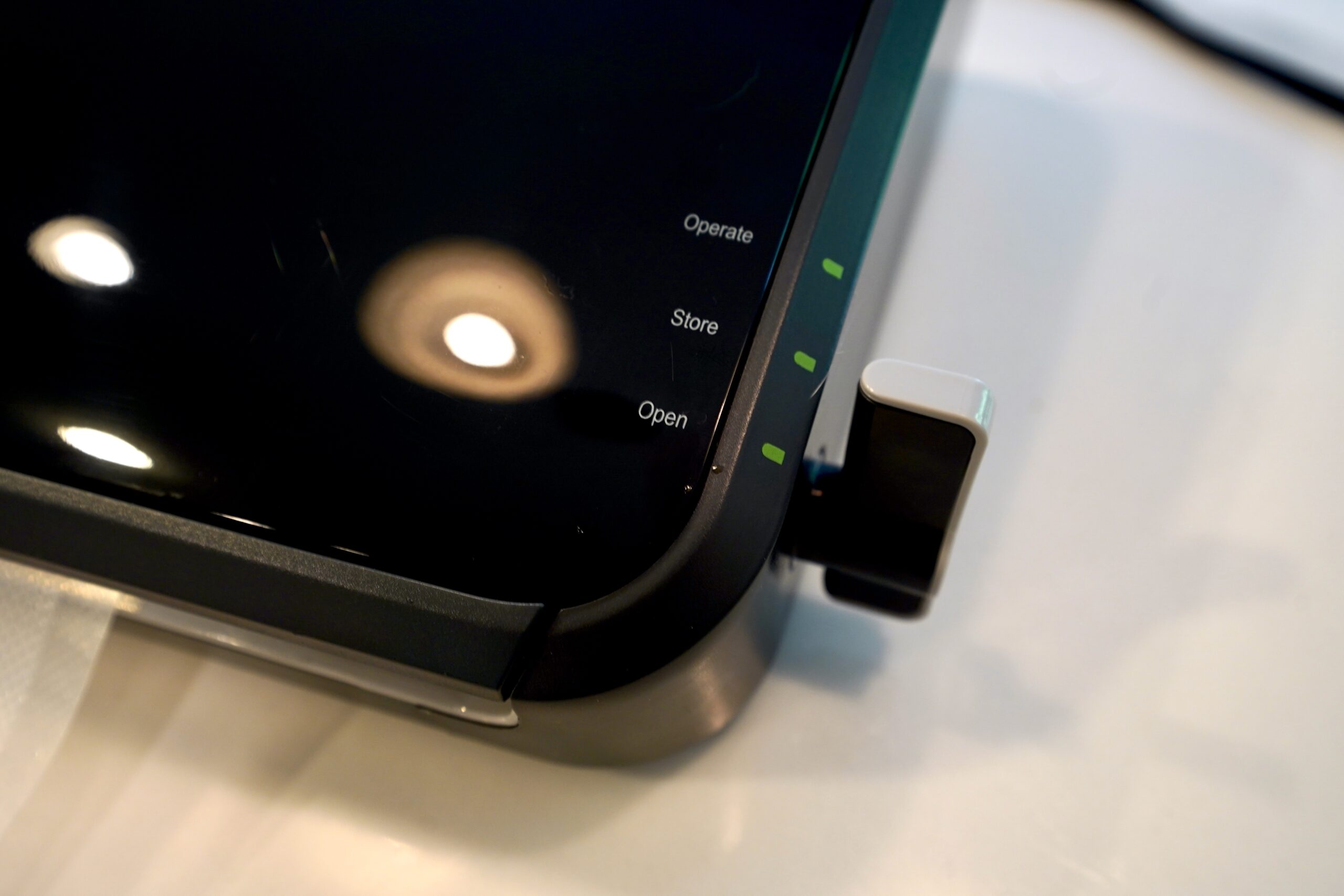
I expected the latch to be like flipping a light switch, but it’s more like the force required to move a gear shifter. Then you’ll press the seal or vacuum button. The vacuum is fairly quiet, and you can tell the unit has a lot of power as it’s pulling air from the bag. Once it’s done, it automatically seals off the bag. I can’t stress enough how intuitive it is to make a bag, drop meat in it, and then vacuum seal it with the FM 2100. You can get in a groove and get a lot of food ready for the freezer.
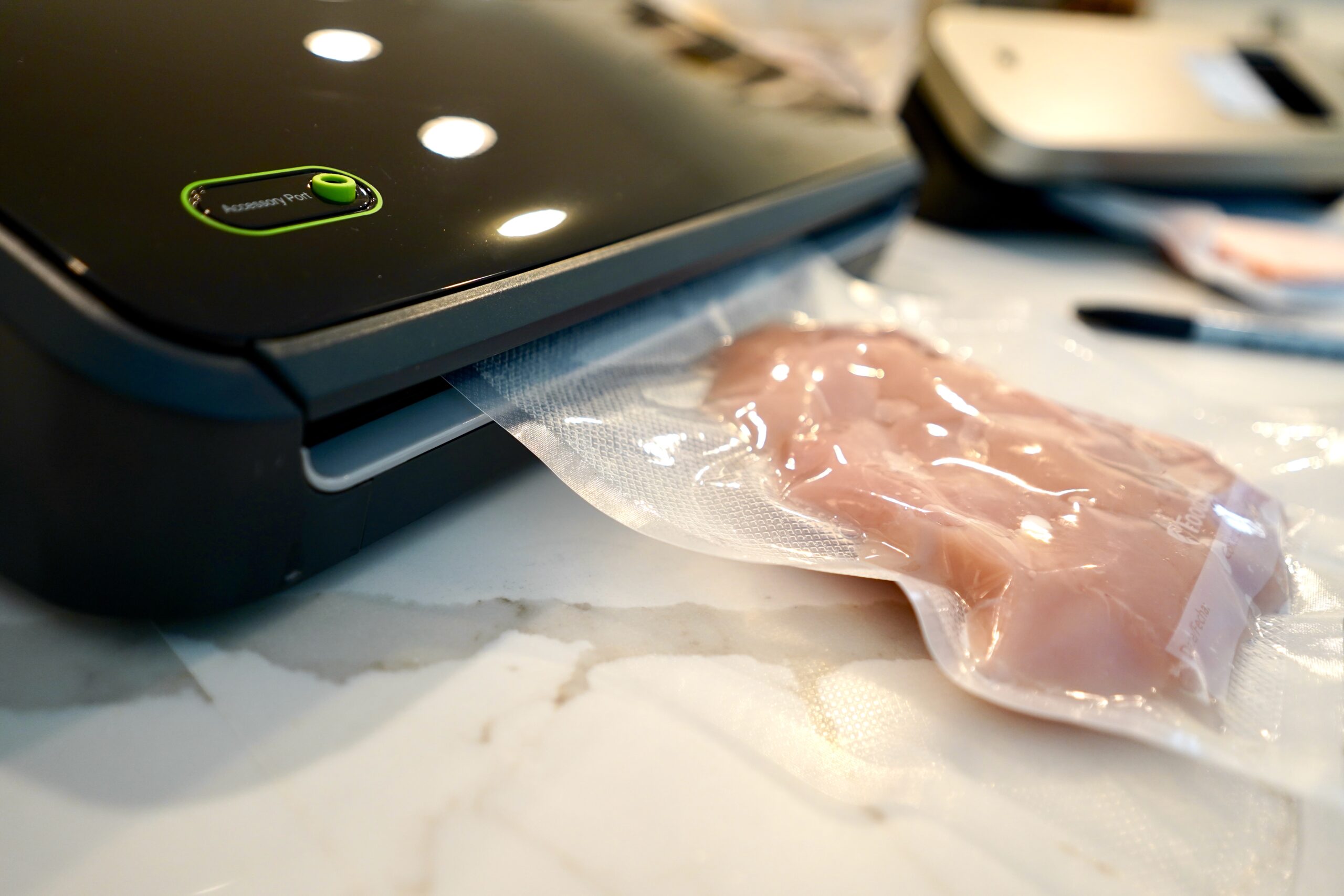
If you want to vacuum jars, containers, or even a bottle of wine, the FM2100 comes with an accessory hose. The hose attaches to FoodSaver jar sealers, wine stops, and food storage containers. Among those accessories, the storage containers are the most useful to me. That’s because they allow you to vacuum liquids without the mess of trying to do it in a vacuum bag. They open the door to preserving soups and doing quick marinades. Just be aware that the containers aren’t cheap, but there are compatible options from other brands for a lot less money.
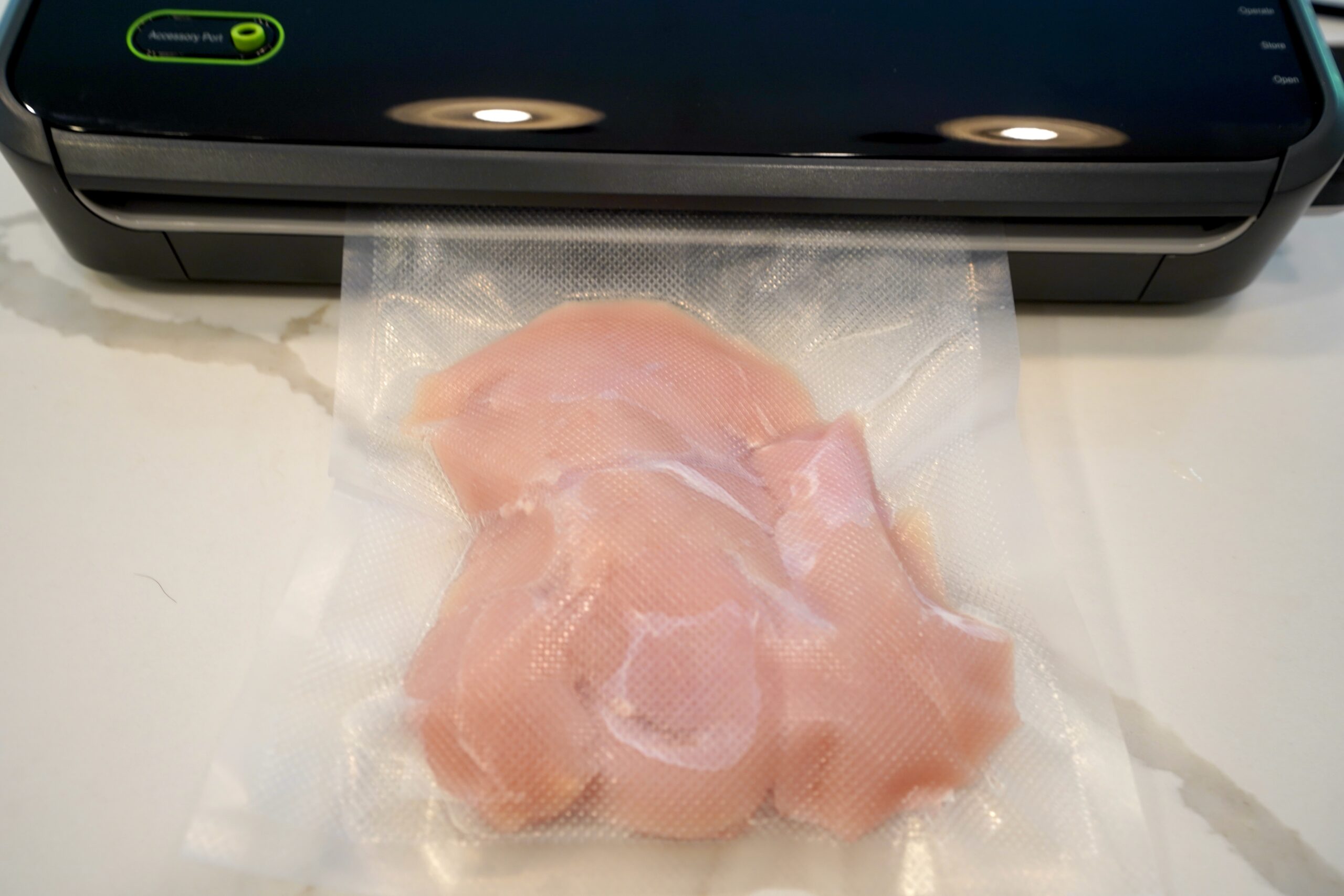
My old FoodSaver took up a lot of cabinet space, and it was annoyingly loud. The FM2100 solves those two main issues, and I think it’s the best vacuum sealer for home use.
Gear decisions often come down to compromises. The Meat! Chamber Vacuum Sealer is the better vacuum sealer because of its versatility and feature set. But that performance comes at a price and size penalty. For a quarter the price of the Chamber Vacuum Sealer and a much smaller footprint, the FM2100 strikes a nice balance of performance and real-world usefulness.
Best Compact: FoodSaver VS1150
- Dimensions: 4 x 12.2 x 5.7 inches
- Compatible with 8-inch vacuum seal rolls and 1-quart and 1-pint vacuum seal bags
- Can be used with the FoodSaver Handheld Sealer attachment (sold separately) to vacuum FoodSaver Zipper Bags and Fresh Containers
- Price: $65
Pros
- Small footprint
- Easy to operate
Cons
- Louder than the FM2100
- No bag cutter
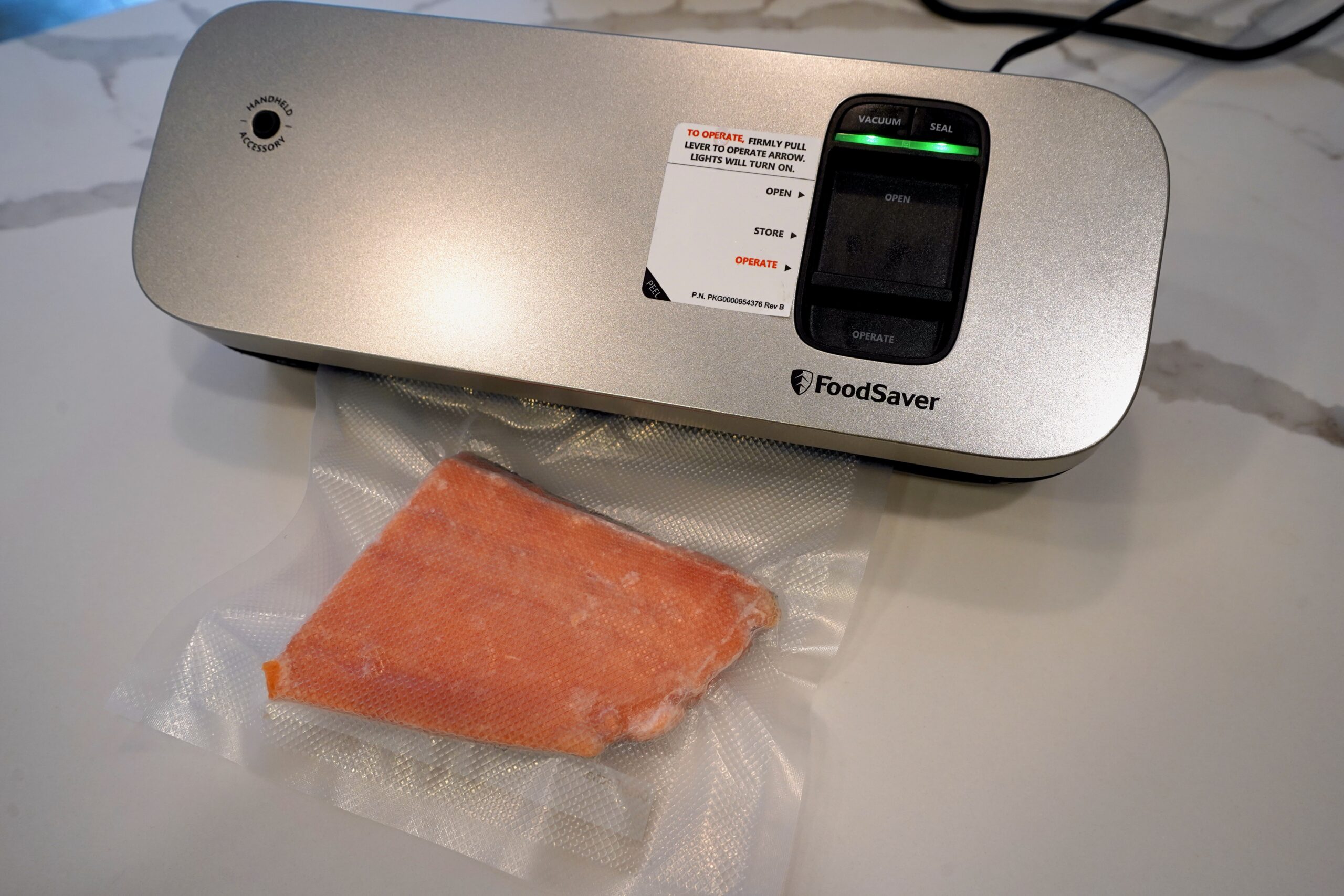
Kitchen gadgets take up a lot of space, and if you’re looking for a small vacuum sealer for preserving food, marinating, sous vide, or taking on trips, the VS1150 is the best vacuum sealer out there. It doesn’t have features like bag storage or a bag cutter, but it will still quickly and easily vacuum seal. Remember that it cannot use large bags and will only work with 8-inch or smaller bags.
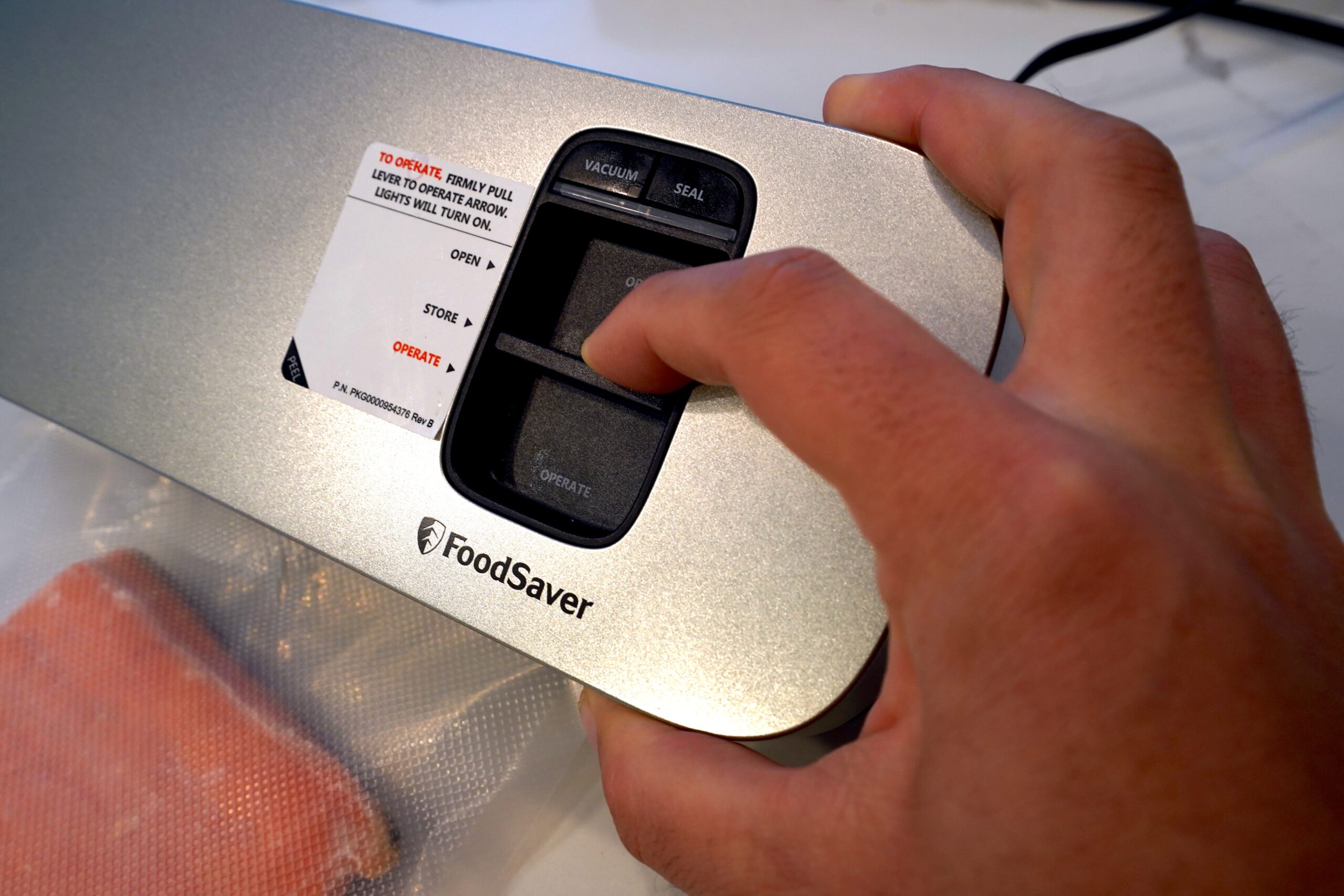
The operation couldn’t be more straightforward. You insert the bag, close the lid, pull the switch, and push the button for your desired operation. The first part of the vacuuming process is very quiet, but it transitions to a high-pitched sound as it finishes, which makes it louder than the FM2100.
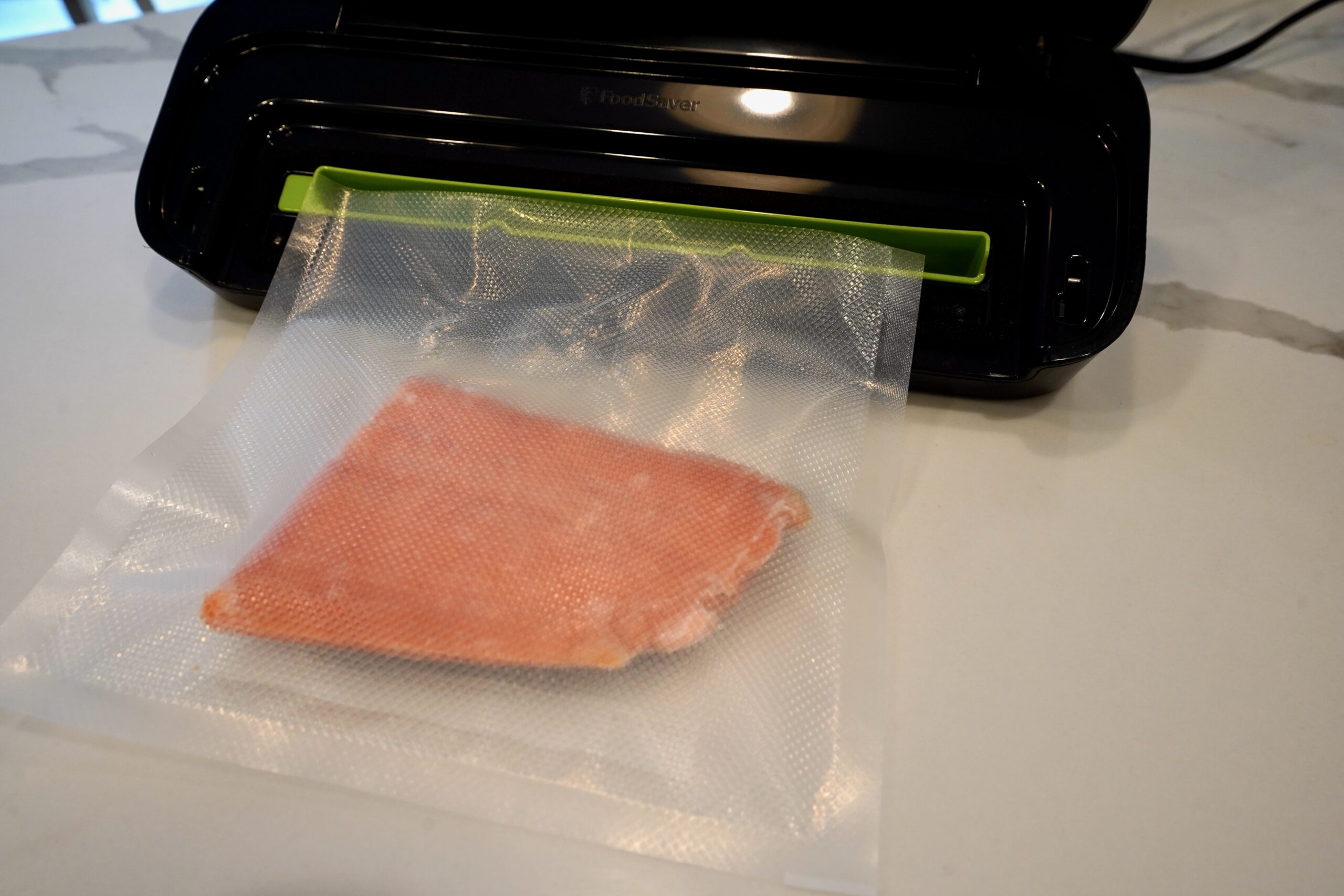
I think the VS1150 shines as a portable unit to take on fishing trips—I’d prefer the FM2100, which can use large bags for hunting. At the end of each day, you can drop whole cleaned fish or filets into bags, seal them, freeze them, and they’re ready for the journey home. The sealer itself doesn’t take up much space in luggage or even a carry-on bag.
Read Next: Best Wireless Meat Thermometers
Best Chamber Vacuum Sealer: Meat! Chamber Vacuum Sealer with Oil-Less Pump
Key Features
- Includes vacuum bag sampler pack
- 12-inch sealing bar
- Digital vacuum and seal time display
- Auto bag size select feature
- Chamber Dimensions: 13 x 12.2 x 3.5 inches
- Weight: 28 pounds
- Exterior Dimensions: 17.5 x 14 x 10.25 inches
- Price: $700
Pros
- Simple operation
- Smooth Lid
- Auto bag size selector
- Great air removal and seal
Cons
- Bowl-like chamber is slightly smaller than some other chamber vac sealers
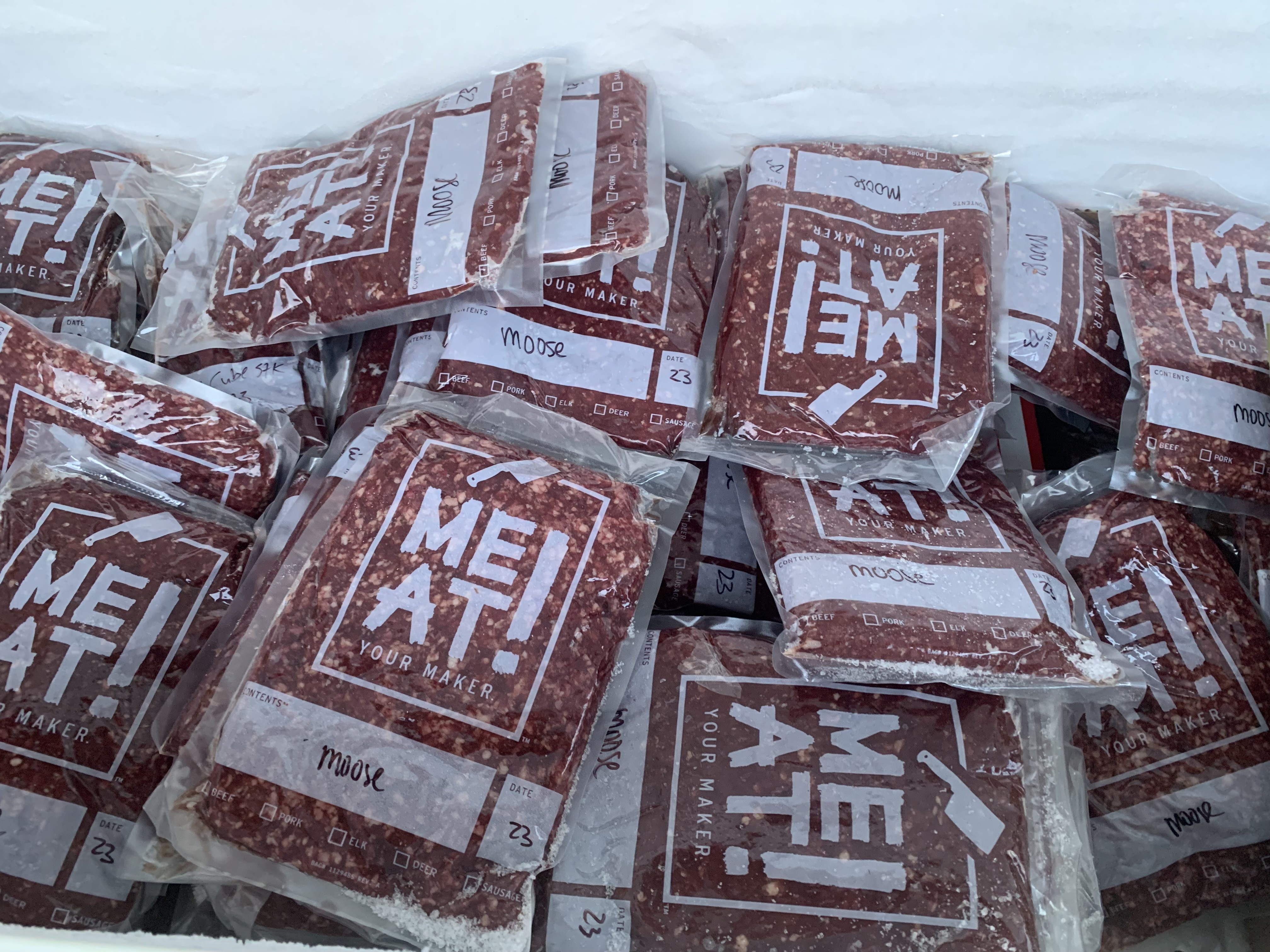
Tyler Freel
The MEAT! Oilless chamber vacuum sealer is probably the most user-friendly, streamlined unit for the average user. Unlike previous models, this one doesn’t require filling the vacuum pump with oil. It has a sleek, modern look, and automatic lid operation. With the bag set in the vacuum chamber, simply press the lid down and it locks automatically, releasing after the cycle completes. This chamber vacuum sealer has a digital display and manual and automatic seal modes where you can select bag size.
The curved chamber is great for sealing liquids, but doesn’t seem to have as much volume as the Cabela’s chamber vac. The 12-inch sealing bar works with a variety of bags, and for anyone who vacuum seals a high volume of meat or produce, this is a great option. I packed my whole 2023 moose with this and the Cabela’s chamber vacuum sealers, and this is my favorite.—Tyler Freel
Cabelas Commercial-Grade Chamber Vacuum Sealer
Key Features
- Includes vacuum bag sampler pack
- 12-inch sealing bar
- Digital vacuum and seal time display
- Chamber Dimensions: 10 x 12 x 3.5 inches
- Weight: 33 pounds
- Exterior Dimensions: 16.5 x 14.5 x 10.5 inches
- Price: $600
Pros
- Large sealing chamber
- Can seal liquids
- Customizable vacuum and seal times
- Compatible with other bag brands
Cons
- Lid operation is a little clunky
- Some sharp corners
If you’re serious about vacuum sealing, a chamber vacuum sealer is the way to go. They’re more expensive than Food-Saver-type sealers, but the benefits are worth it to many users. The Cabela’s Commercial-Grade chamber vacuum sealer is simple and durable. Its sides and vacuum chamber are stainless steel and easy to clean. The simple controls allow you to fine-tune your vacuum and sealing time to produce the perfect end product. It’s compatible with a variety of bag sizes, and can use other brands of vacuum bags you might find at your grocery store.
This vacuum sealer is really straightforward and easy to operate. Though it takes around 60 seconds to seal up an average-sized bag, it produces a superior seal and removes more air than a conventional vacuum sealer. When vacuum-sealing slimy fish or liquids, the fluid doesn’t compromise the seal. Because pre-made bags are much cheaper for this style of vacuum sealer, the machine will quickly recoup the extra initial cost. My only complaint is that the unit has some sharp corners and the lid operation is a little clunky.—Tyler Freel
Read Next: How to Cook Venison: The Best Ways to Prepare Every Cut
DIY Vacuum Sealer
On a family vacation to the Outer Banks, we decided to all go offshore fishing, where we caught a ton of triggerfish and mahi-mahi. The only issue was that we needed to freeze those excellent-eating filets for transportation. With no vacuum sealer at our Airbnb, I used a simple trick I learned from a fishing guide. Here’s how to vacuum seal without a pump.
You’ll need the following:
- Ziplock freezer bags
- A large container full of water
You put your filets in a gallon ziplock bag. Slowly submerge the bag in water to force out the air, then seal the bag off just above the water’s surface. It’s not a perfect vacuum seal, but it will keep the freezer burn off your meat until you can get it properly sealed up for long-term storage.
How to Choose the Best Vacuum Sealer
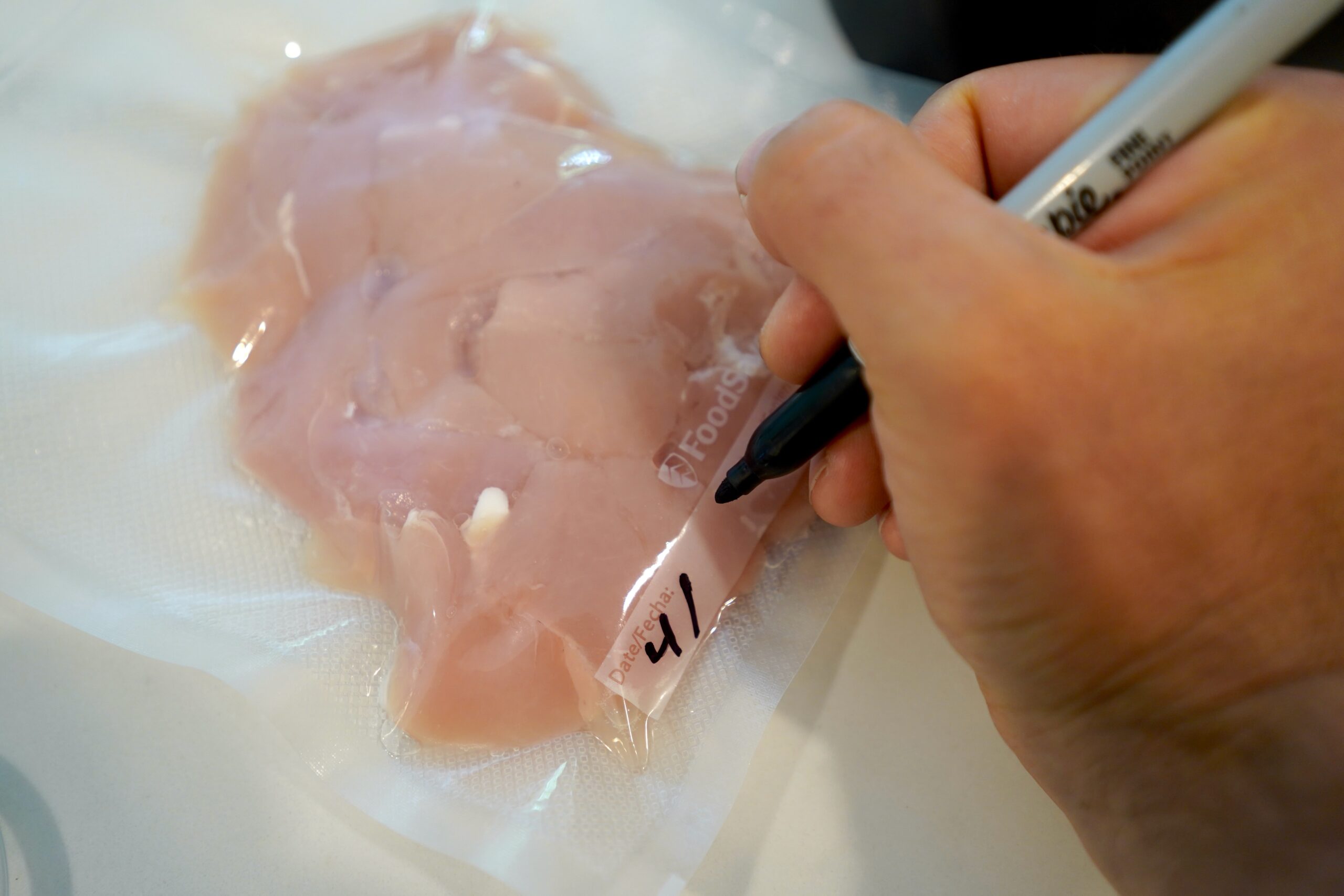
Chamber vs. External Vacuum Sealer
An external vacuum sealer, like the FoodSaver options in this review, sucks air out of the front of the bag and then seals it. A chamber sealer equalizes the pressure inside the bag and in the chamber. That key difference is why chamber sealers are better options for sealing liquids like soups and marinades. The liquid doesn’t get sucked out of the bag and interfere with the seal. Chamber sealers can also be used for vacuuming canning jars. Another major difference is that chamber sealers can use less expensive bags than external vacuum sealers.
How You’ll Use Your Vacuum Sealer
Every outdoorsman needs a quality vacuum sealer, but not everyone is going to have the same needs. If you need a model that you can take to your fishing camp, then a portable, minimalist model is ideal. If you’re preserving a lot of food, including liquids, then a chamber sealer is a worthwhile investment. If you need a workhorse home vacuum sealer, then the FM2100 is perfect for the job.
Vacuum Sealing Tips
- Double seal your bags
- Be gentle with vacuum-sealed food, so you don’t break the seal
- Don’t forget to label your bags
FAQs
Vacuum sealers are one of the handiest kitchen tools because they reduce food waste and speed up marinating times.
External and chamber vacuum sealers are the two main types. External vacuum sealers are ideal for most use cases, but chamber sealers are excellent for high-volume use and liquids.
FoodSaver, Uline, OutOfAir, Kirkland, and Cabela’s all make great vacuum bags. The key is buying in bulk to save money and to make sure you buy the right type for your sealer.
Final Thoughts on the Best Vacuum Sealers
When I used to wrap my wild game in butcher paper, I felt like my wrapping technique was all that stood between freezer burn and my future meal. With a vacuum sealer, even when I’m still butchering at 2 a.m., I know that it’s really hard to screw up. That’s why I’d recommend all anglers and hunters own one of the best vacuum sealers.
- Best Overall: FoodSaver FM2100
- Best Compact: FoodSaver VS1150
- Best Chamber Vacuum Sealer: Meat! Chamber Vacuum Sealer with Oil-Less Pump
- Cabelas Commercial-Grade Chamber Vacuum Sealer
- DIY vacuum sealer
